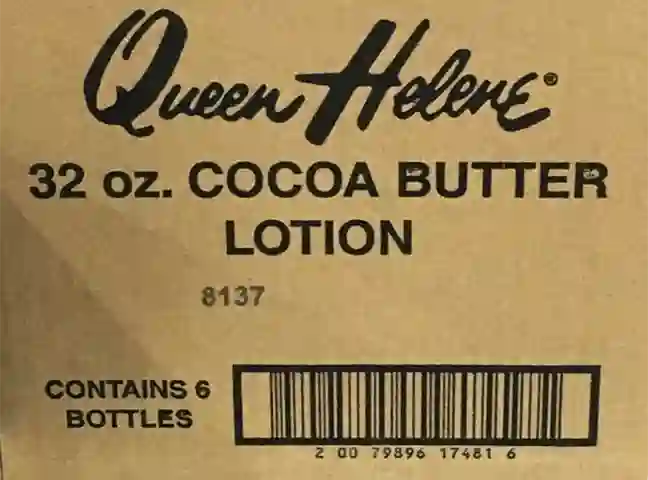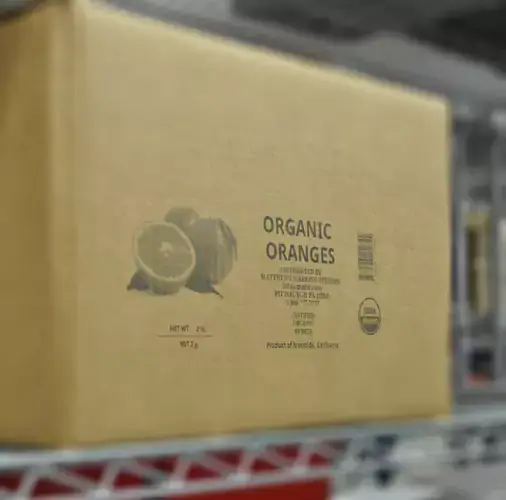When to choose direct marking over labeling for case coding: 3 real-life examples
We’ve previously covered when you should choose automated labeling over direct marking here, so now let’s look at the other side.
Virtually all secondary packaging requires some form of marking, whether brand logos and graphics, barcodes for traceability, or large human-readable text visible to a picker or forklift driver.
While labeling can be a requirement for some retailers or distribution centers, there are instances where direct marking offers advantages.
Here, we outline three examples of when direct marking made good business sense.
Example 1: Reducing carton coding costs by 50%
Cost savings are the top advantage of printing directly onto secondary packaging. Many manufacturers will opt for direct marking to reduce the costs associated with labeling– especially if they use manual labor to apply labels.
Looking at dollars alone, directly printing codes and product information onto cartons and cases of packaged products is generally the most cost-effective option. Direct marking typically offers higher maximum printing speeds and lower printing costs, as there’s no need to buy and store ribbons and labels.
Specific savings depend on many business variables and differ greatly from manufacturer to manufacturer, so to illustrate, let’s dive into our first real-life example.
A Canadian organic beauty and cosmetic product manufacturer reduced costs by 50% and cut errors by 30% by switching its case coding from labeling to marking.
The company struggled with its previous process of print-and-apply labels and manually applying barcode and item description labels to the side of corrugated shipping boxes. It meant high costs for consumables and labor, not to mention the cost of ongoing label content and placement mistakes.

Matthews recommended replacing the label printers and manual label application process with three T-Series high-resolution piezo printers – one per production line – powered by Matthews’ marking and coding automation platform, MPERIA.
Example 2: Reducing consumables and label costs by up to $20,000
Another cosmetics manufacturer opted for a direct carton marking solution to replace the process of manually encoding, printing, and applying adhesive-backed paper labels to their secondary packaging. Their labeling process was error-prone and labor-intensive, adding unnecessary costs to the business.
Since the company could meet customer and regulatory requirements with direct coding, the team opted for the MPERIA automated marking and coding platform with a reliable L-Series thermal inkjet (TIJ) printing system. The solution directly prints the company’s logo, product information, expiration, and lot coding onto each case.
The results have been outstanding. The manufacturer has completely cut the cost of the labels, space needed to store them, label waste, and 95% of the manual labor required to print and apply them. As a result, the company has reduced its annual consumables and labor costs by $15,000 -$20,000 and achieved a full return on investment (ROI) in four months.
Example 3: In-line carton marking pays off
A well-known food ingredient manufacturer wanted to replace its labeling with an in-line, dual-sided printing solution. This would directly print alphanumeric code information and a GTIN barcode on two sides of a shipping case.
The manufacturer also required their existing label creation software to remain the primary message creation tool to maintain continuity.

Matthews implemented T-Series high-resolution piezo printheads powered by the universal print platform, MPERIA, to achieve in-line carton marking. As a result, the manufacturer reduced pre-printed box inventory, freeing up warehouse space, and cutting labor costs associated with incorrectly packed boxes.
The cost savings amounted to an impressive $80,000 per year, with $38 per thousand saved for corrugated printed boxes and $118 per thousand for previously labeled boxes.
Why choose? You can have both
You don’t have to choose between direct marking or labeling for case coding – with the right technology, you can have the best of both.
Regulations or customer requirements may prevent you from moving to direct carton marking for all cartons and products. Some retailers will only accept cartons with barcode labels.
As such, there may be situations when it makes sense to use direct marking to code some information (e.g., logo, graphics, product name, information over a large area, barcodes for internal use) while using compliant labels for barcodes and other mandatory details.
Doing this successfully and reaping the benefits comes down to the technology you use to manage the coding process.
Matthews’ MPERIA can handle both case printing and labeling. With full integration, MPERIA lets you centrally control carton printers and automated print and apply labeling machines such as the A-Series across the production floor using a single user interface. The controller supports multiple installations of printheads, handling up to 900 unique codes per second.
Get a tailored solution for your case coding
If your case coding needs an upgrade, our experts will help you with the best-fit solution for your needs – whether labeling, direct marking, or both. Fill out the quick form below to talk to us.
